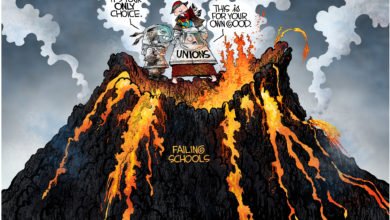Deflation or Inflation? Yes
Since the beginning of the “Great Recession” that Americans still find themselves in, there have been prognostications of incredible inflation while other “experts” claim that crippling deflation would be the necessary outcome. Could they both be right?
Perhaps – there are two major forces at play in our economy right now: price inflation and income deflation.
Price inflation

Commodities are going through the roof. Oil is above $90 a barrel, corn is $6.07 per bushel, March wheat got as high as $8.05 a bushel this week soybeans, cotton, sugar .. you name it.
It’s not just food and clothing. Copper, gold, silver are also much higher recently. All of these commodities are building blocks for the food we eat, the clothes we wear and consumer items Americans need.
Oil prices hit twice as hard. Not only is petroleum a raw material for plastics, medicines, food and clothing, but it is also used to fuel the trucks, trains, planes and ships that transport those goods to stores.
Now that the government is pushing to raise the amount of ethanol in gasoline, rising corn prices will also hit Americans in two places. As a component of E10/E15/E85, it will increase the price at the pump. As more corn is turned into fuel, the supply-demand curve will steepen and everything that has corn as an input will see raw material prices increase even faster.
Wage/Income Deflation
The American job market has not recovered from the recession and is likely to take several years to do so. As The Wall Street Journal reports, this recession is already longer than the last wage period where wage deflation took hold.
The only other downturn since the Depression to see similarly large wage cuts was the 1981-82 recession. But the latest downturn is already eclipsing that one. Unemployment has stood above 9% for 20 straight months—longer than the early 1980s stretch—and is likely to remain above that level for most of 2011, putting downward pressure on wages.
With millions more workers seeking jobs than there are available, employers have gained a stronger position in pay negotiations. The job market is incredibly competitive allowing employers to cherry pick the best talent for the salary dollar.
Another downward wage pressure is that employers do not have to give big salary increases or bonuses to keep talented employees. A tough job market means fewer employees will be willing to leave and if they do, there is an ample pool of workers ready to take their place – perhaps at a reduced rate.
The Journal post shows evidence that these dynamics are cutting wages for American workers.
Economists had wondered how far this dynamic would go in this recession, and now the numbers are starting to show it: Between 2007 and 2009, more than half the full-time workers who lost jobs that they had held for at least three years and then found new full-time work by early last year reported wage declines, according to the Labor Department. Thirty-six percent reported the new job paid at least 20% less than the one they lost.
Prices Higher and Incomes lower – Inflation or Deflation?
Both. Production costs are going up, but consumer buying power is falling off.
Consumers have to pay home heating costs, put gas in their cars, buy clothes and food. If all of those things cost more, and consumers are making less money .. there is less consumer potential in the market place. Welcome back the nemesis from the late 1970’s and early 1980’s: stagflation.
Remember the “misery index” from the 1976 and 1980 Presidential election? The misery index is computed by adding inflation to unemployment. If both are high, a stagnant economy and high inflation are present. Stuff gets more expensive to make, but no one can afford it so the economy stagnates.
Jimmy Carter holds the current record of 21.98, but Obama’s current term is on a run taking the misery index from 7.73 at the beginning of his Presidency to 10.94 in November. The current numbers are deceptively low for two reasons: the federal reserve inflation rate and bureau of labor’s unemployment numbers aren’t telling the whole story.
Anyone that has been to the grocery store or filled their car up with gas knows that things are much more expensive lately. Because the government’s inflation measure does not include food and energy, it doesn’t take into account the very things that Americans simply must buy. The incredibly low inflation rate reported by the fed is a sham and does not truthfully report the increase in living costs that Americans face.
The unemployment numbers are also portraying a false positive. BLS statistics do not include those that have simply given up looking for work or have run out of benefits. Unemployment is a measure of first time applications. After 20+ months, not many first timers left to apply. As this article from the Associated Press states, 9.4 is not as good a number as the President would have America believe (emphasis mine).
The unemployment rate did come down, to 9.4 percent from 9.8, but that was partly because people gave up looking for work.
..
All told, employers added 1.1 million jobs in 2010, or about 94,000 a month. The nation still has 7.2 million fewer jobs today than it did in December 2007, when the recession began.
Producers have been eating the increasing costs of their raw materials and transportation. That practice is ending as margins have been squeezed as tightly as possible. The cost to the consumer is going up, but the consumer now has less money to spend. Stagflation, again.. oddly enough, under another progressive Democrat President that has been listening to Paul Volcker for economic advice. Same players, same results.






My co-workers and I haven’t seen a raise in two years and they just told us it will be at least one more year before we see one.
Groceries and gas are destroying our budget. We can’t afford to eat out or buy any “extras”. This story has it right.